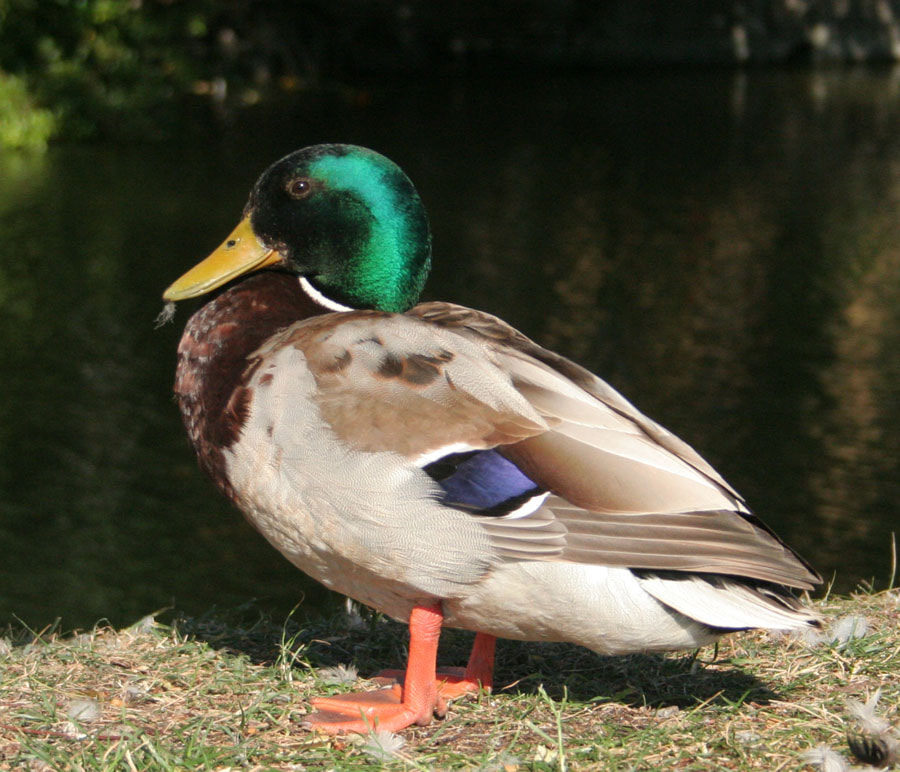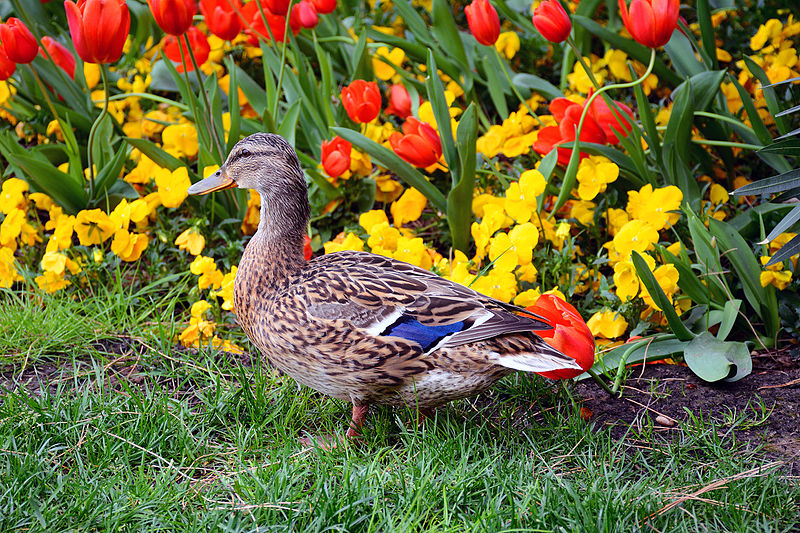|
|
mallard
Anas platyrhynchos
Identification:
The Mallard is by far the commonest duck species, ranging throughout North America. The male sports a glossy green head, white neck ring, and blue wing patch with white edges. The male’s body is brown and gray and he has a bright yellow beak. The female is mottled brown, tan, black, and gray except for a blue wing patch like the male’s. She has a less conspicuously colored beak. Behavior: In their watery habitat mallards are dabbling ducks; that is, rather than dive, they scoop up seeds and aquatic organisms in their beaks while swimming. These omnivores have adapted very well to human presence and can be found in urban, suburban, and rural areas – anywhere there is water. What brings it to the SBG? Mallards are so abundant that they occasionally appear even where there is no water body. Even the intermittent stream at SBG might attract them when it is full. Or, they may be seen flying over. When can I see it? Not frequently at SBG, because they are water birds, but since they are so abundant and they are year-round residents, they may be seen occasionally. |


